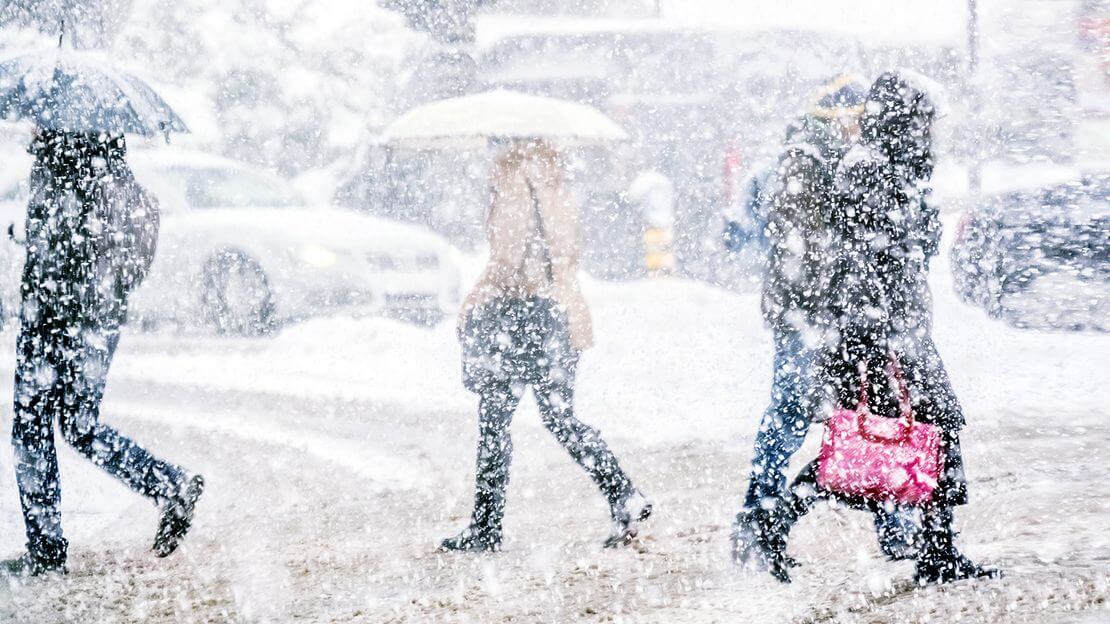The risk of developing certain health problems increases as temperatures fall. However, you can prepare to ride through the colder weather safely.
Depending on your location, temperatures are likely to plummet in December, January or February. Check out the National Centers for Environmental Information map to see when the lowest temperature will be in your area. You might also find yourself in an area experiencing unexpectedly cold spells, despite America’s increasing temperature. The New York Times reported that extreme weather events are becoming more common due to climate change in January 2019.
According to CBS News, in February 2021, it may seem counterintuitive, but a warmer climate could be causing more extreme cold.
How can you prepare for the cold? This is a great place to start: Extreme cold survival guide
How your body responds to extreme cold and when to worry
The Centers for Disease Control and Prevention(CDC) states that there is no temperature limit for “extremely cold” and its effects. This is because the definition of extreme cold depends on the area’s weather patterns. Near-freezing temperatures, for example, are considered to be “extremely cold” in areas that don’t experience winter weather.
Extreme cold can have a variety of health effects for humans. It all depends on the temperature and air conditions, as well as how much skin you are exposed to and whether or not your skin has been moistened (from sweat).
A sudden temperature change can throw your body off balance. Donald Ford, MD is a Cleveland Clinic family physician who has been board certified. You can feel a stinging sensation in your lungs when you step out. This is because the cold air is coming in contact with your lungs’ moist surface, where carbon dioxide is being exchanged for oxygen.
Dr. Ford says, “Imagine putting a cup full of warm water outside at below-zero [F] temperatures. The water will freeze fairly quickly.” Lung damage can occur in as little 15-30 minutes if the windchill drops below 0 degrees F. Ford says that the real number to pay attention to is the windchill number. This number does not reflect the temperature on your thermometer. Windchill can also change rapidly. Weather.com says that meteorologists often refer to windchill, which is the temperature that feels “like”, on local news stations and the Weather Channel.
Cold weather causes the body to increase blood flow to the trunk to keep vital organs warm, tighten blood vessels and decrease blood flow to your extremities. “Skin is the most affected area of the body when cold weather hits. That’s why I don’t use the term ‘bloodstream’. Ford states that it is your largest organ, and it is right on the surface. The distance from the heart a body part is will determine how much blood flow it loses, so fingers and toes are most at risk.
How can you tell if you are at risk for hypothermia?
Hypothermia is when your body loses heat more quickly than it can make it. Your body’s temperature will drop to dangerously low levels (below 95°F), according the Mayo Clinic. This decrease in body temperature can cause problems for your heart, nervous system, or other organs.
Dr. Glatter says that hypothermia is a medical emergency. Your heart, brain, internal organs and heart cannot function if your body temperature drops. You will eventually die without aggressive resuscitation or rapid rewarming. Glatter says that shivering is the first sign of hypothermia. This happens when your body attempts to generate heat. The second stage includes slower breathing and a slower heart rate, as well as confusion and sleepiness.
“The most dangerous thing about hypothermia, it can often cause impaired cognition, which affects your ability to recognize what is wrong, so the hypothermia may get worse,” Bradley J. Uren MD, assistant professor of emergency medicine at University of Michigan Medical school in Ann Arbor. Glatter and Dr. Uren both agree that hypothermia can cause someone to look drunk, stumble, or speak incoherently. However, checking your temperature can help you understand where the symptoms may be coming from.
Hypothermia can be caused by sweating or being wet. Remember that snow melts quickly, especially if it gets under your skin and on to your skin. If you are a runner who is determined to run a lot, or plan on being outside in the snow, make sure to take steps to keep your feet dry. If the temperature drops below 50 degrees F, you should wear a synthetic base layer that wicks away moisture. Then, add a natural fiber such as wool to the middle. Finally, you can use a waterproof jacket made of down or similar materials. This temperature may seem high but if you are sweating through your clothes, it can cause your body to lose heat. You’re in danger if you sweat below 0 degrees F.
Uren says that this is the ideal way to shield yourself from outside elements and to prevent you from sweating out hypothermia. Water, in any form, can be your greatest enemy.
Even if you plan to stay dry, you can be exposed to extremely cold temperatures without properly dressing. Hypothermia is most likely to develop after 30 minutes to an hours when the windchill drops below 0 degrees F.




